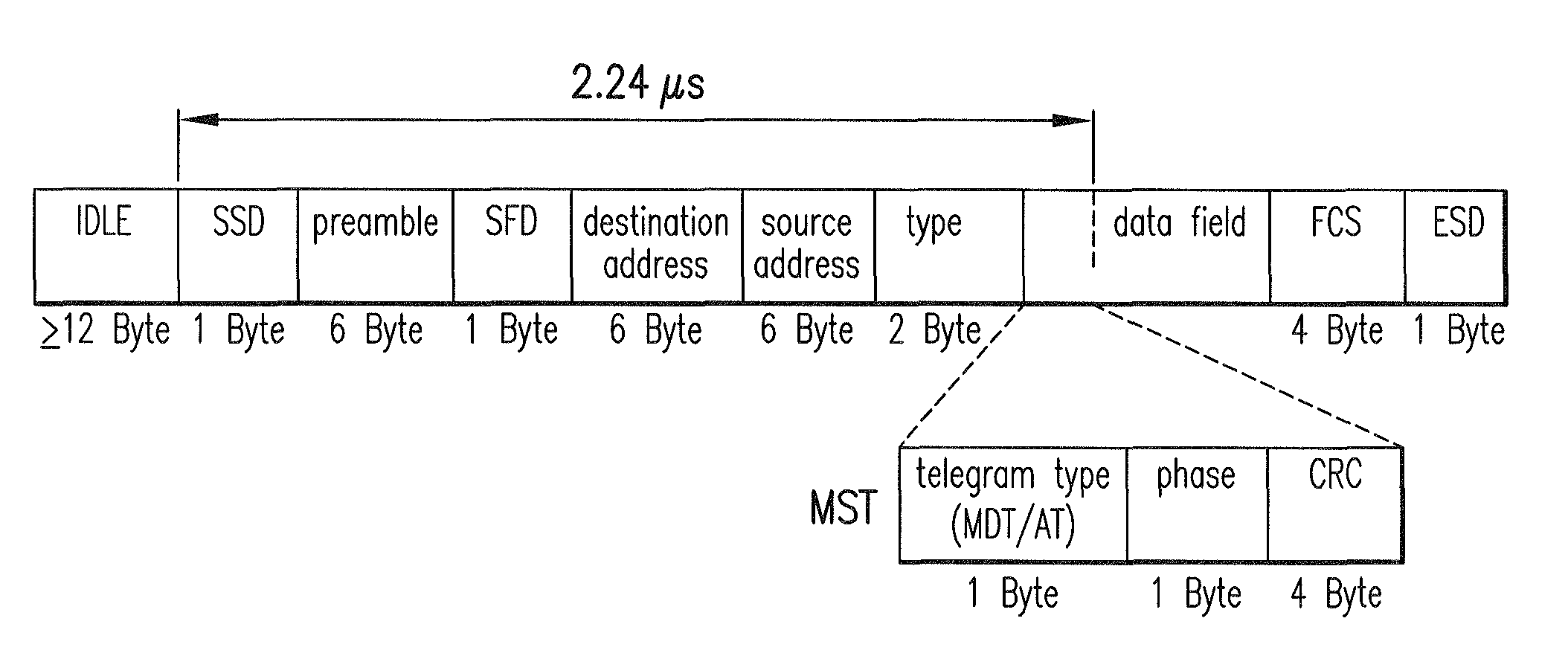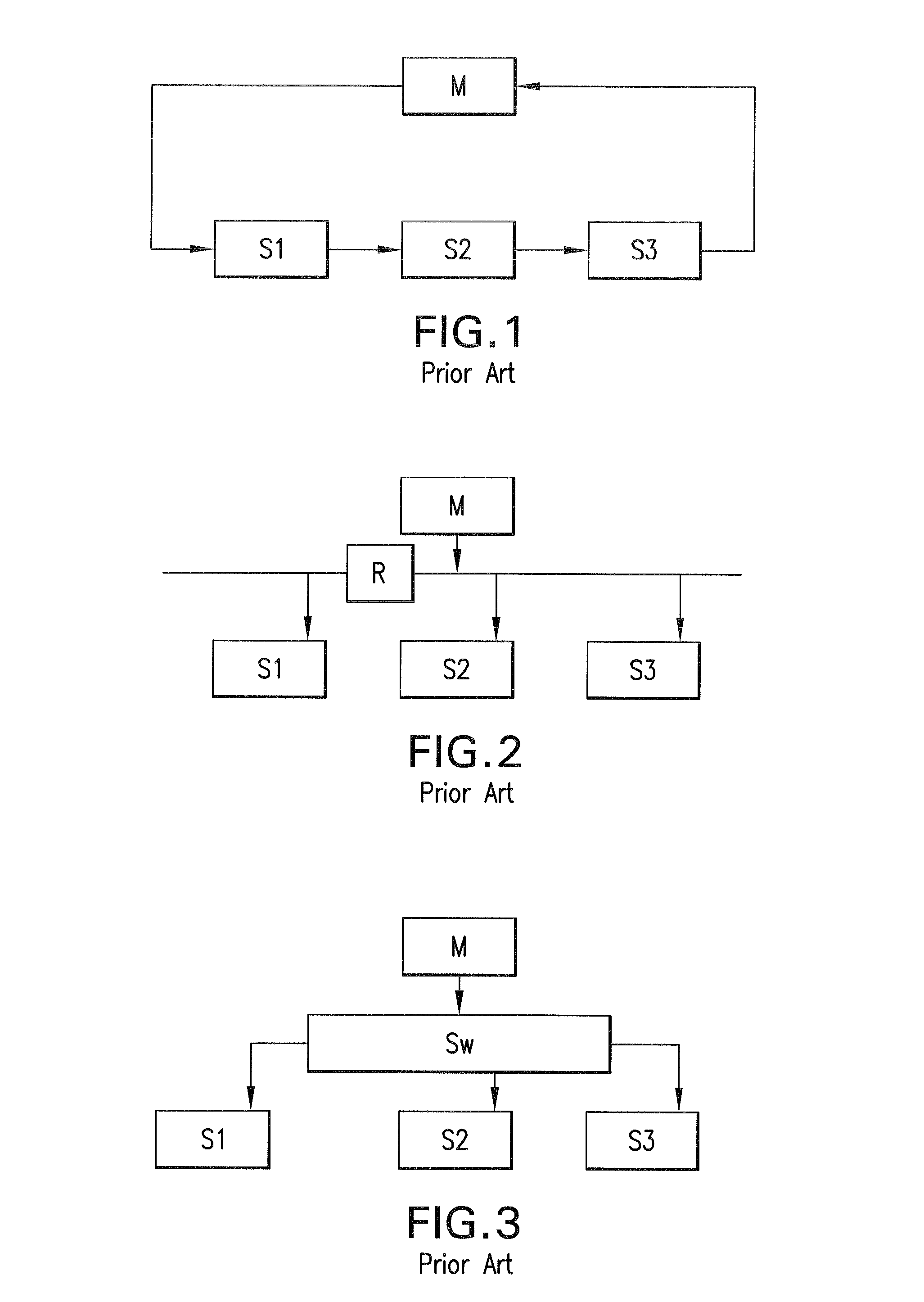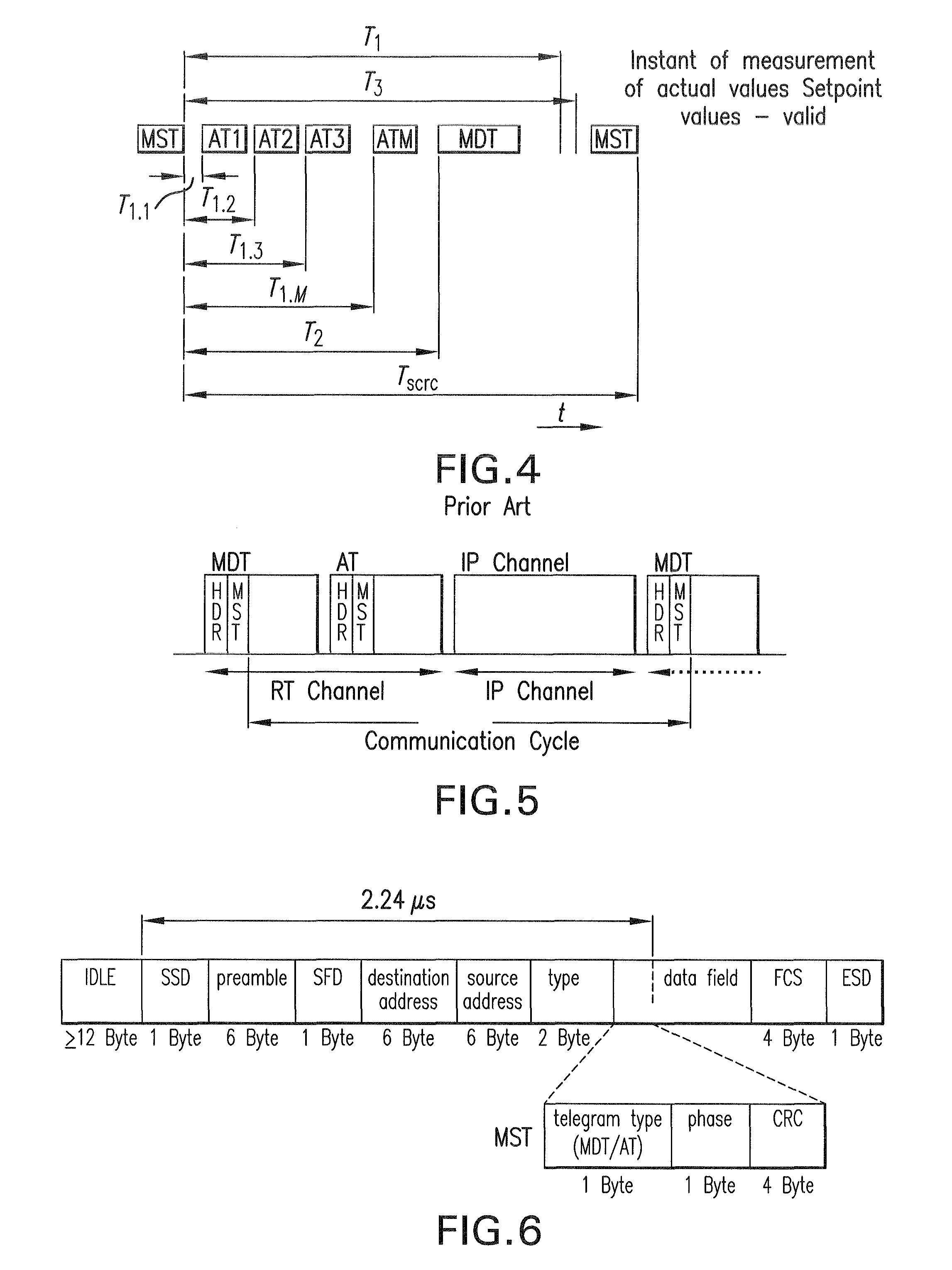[0011]The object of the present invention, therefore, is to avoid the disadvantages of the related art and, in particular, to realize a particularly efficient synchronization of the at least one participant with the central participant.
[0017]It is furthermore preferred that the end of the subfield containing the synchronization information occurs at a specified time interval after the beginning of the data telegram. The specified time interval is known and constant and, in particular, is independent of the total length of the telegram. Since the beginning of the data telegram has a fixed reference to the instant of synchronization in the central participant, the time interval between the instant of synchronization in the central participant and the end of the synchronization information embedded in the
Master Data Telegram is known. The synchronization time interval relative to the
master clock pulse is therefore known, resulting in a constant instant at which triggering occurs, independently of the telegram length. In this manner, stable synchronization with a known time interval can be achieved.
[0018]The specified time interval is preferably in the range of a few microseconds. It is particularly preferable for the specified time interval to be approximately in the range of approximately two microseconds and, in particular, 2.24 microseconds. It is preferable to select a time interval in this range, since it allows all of the synchronization information to be transmitted, given the length of the synchronization information required based on experience. These time frames are also preferred because they enable the synchronization information to be present at the further participants at a sufficiently early stage in the communication cycle, thereby allowing evaluation of the synchronization information and further
processing of the operating information contained in the
Master Data Telegram to be carried out efficiently.
[0019]According to a preferred exemplary embodiment of the present invention, the synchronization information contained in the data telegram is protected by a dedicated
checksum. Redundancy therefore results, since the Master Data Telegram is protected as a whole by a
checksum and the synchronization information has its own, additional
checksum, so to speak. The particular
advantage of this embodiment lies in the fact that
receipt of the synchronization information does not have to delayed until the entire Master Data Telegram—which can be considerably longer—is received, and the data is checked for corruption before the synchronization information is made available to the substations. The checksum for the synchronization information is also advantageous because, compared with the entire Master Data Telegram, the synchronization information is much less likely to be affected by a bit error. The likelihood of this occurring is reduced because the likelihood of a destroyed telegram or partial telegram with evenly-distributed bit errors is roughly proportional to the length of the telegram or partial telegram. Therefore, even if the Master Data Telegram as a whole is not
usable—as was discovered in a check carried out for this purpose by the FCS checksum located at the end of the Master Data Telegram—synchronization can still be carried out properly, since the part of the Master Data Telegram located furthest to the front and containing the synchronization information was transmitted entirely without corruption in this case, as can be determined in certain circumstances based on the checksum for the synchronization information. The checksum can be designed to protect only the synchronization information. An embodiment of the present invention is preferred, however, with which the checksum covers the beginning of the data telegram up to and including the synchronization information. As a result, the initial fields of the Master Data Telegram, such as the
preamble field, the destination address field, the
source address field and the type field are also protected, as required by the communication protocol. The checksum is preferably a
cyclic redundancy check located at the end of the subfield containing the synchronization information. With this embodiment, an independent synchronization telegram is therefore embedded in the Master Data Telegram. The “headers” of these two telegrams are the same, and both telegrams are protected independently of each other by a dedicated checksum. In addition,
processing of each telegram can be started when the checksum is received.
[0020]The evaluation of the checksum is carried out in the at least one further participant preferably via comparison with previously-stored checksums for known data telegram entries. In contrast to the
data content—which is variable due to the
data field, in particular—and the variable quantity of data in the Master Data Telegram overall, checking the integrity of the transmitted data is simplified considerably in terms of protecting the synchronization information, since the quantity of possible data is limited and the data quantity is constant. The checksums can therefore be determined in advance, and the
cyclic redundancy check for determining the
correctness of the synchronization information can be carried out using a simple comparison. The amount of computing effort is reduced as a result.
 Login to View More
Login to View More  Login to View More
Login to View More 


